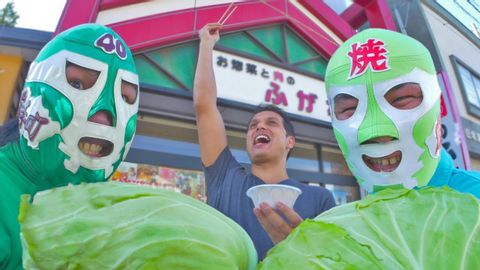
Subtitles & vocabulary
Legend of Cabbage Man & Food Field Trip ★ ONLY in JAPAN
00
林宜悉 posted on 2020/03/24Save
Video vocabulary
experience
US /ɪkˈspɪriəns/
・
UK /ɪk'spɪərɪəns/
- Countable Noun
- Thing a person has done or that happened to them
- An event at which you learned something
- Noun (Countable/Uncountable)
- Knowledge gained by living life, doing new things
- Previous work in a particular field.
A1TOEIC
More field
US /fild/
・
UK /fi:ld/
- Noun
- Area of study, such as physics or biology
- Piece of land used to grow crops/raise animals
- Transitive Verb
- To respond to something or answer a question
- To catch or stop a ball during a game
A1TOEIC
More mean
US /min/
・
UK /mi:n/
- Noun (Countable/Uncountable)
- Average of a set of numbers
- A method, course of action, or instrument by which something can be accomplished.
- Verb (Transitive/Intransitive)
- To express a particular idea or thought
- To intend to do something in particular
A1TOEIC
More sake
US /sek/
・
UK /seɪk/
- Uncountable Noun
- Japanese rice wine
- Noun
- Interest or benefit of someone or something
A2
More Use Energy
Unlock All Vocabulary
Unlock pronunciation, explanations, and filters
